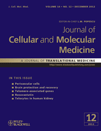Towards a roadmap in brain protection and recovery
Abstract
This article briefly reviews some of the mechanisms involved in the pathogenesis of neurological diseases, i.e. damage mechanisms (DM), and their interactions and overlap with protection and reparatory processes (i.e. endogenous defence activities). A relationship between DM and endogenous defence activity (EDA) regarding therapy principles will also be described. Currently, it is difficult to find the correct therapeutic approach for brain protection and recovery, especially because we do not fully understand all of the endogenous neurobiological processes, the complete nature of the pathophysiological mechanisms and the links between these two categories. Moreover, we continue to use a simplistic and reductionist approach in this respect. Endogenous neurobiological processes, such as neurotrophicity, neuroprotection, neuroplasticity and neurogenesis, are central to protection and recovery and represent the background of EDA. The biological reality of the nervous system is far more complex. In fact, there is an endogenous holistic process of neuroprotection and neurorecovery that should be approached therapeutically in an integrated way. The current tendency to exclusively frame drug activity in terms of single mechanisms and single focus effect might distract from other paradigms with greater explanatory power and hinder the development of more effective treatment strategies. A change of concept is required in pharmacological brain protection and recovery. Prospective considerations include an integrated pharmacological approach, focusing on drugs with multimodal activity and pleiotropic neuroprotective effect which are biological drugs, rather than single mechanism drugs, which usually are chemical drugs.




